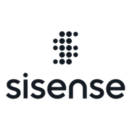Doesn’t every sales team want to sell more?
An effective sales enablement strategy can lead to increased success. Companies with sales enablement have 15 percent better win rates than those that lack it, according to a recent report from CSO Insights.
Developing a strategy that works for your company is a nuanced task. There are a wide variety of best practices and tools to consider employing: in-depth content on product and process, cross-team collaboration and data-driven software, to name a few.
However, specificity is key. The practices that work for one team might not work for another. Sales leaders across New York know this, and it’s important that their teams are equipped with the best resources for their discrete needs.
For instance, salespeople at Monday.com internally leverage the team management platform they sell to collaborate more efficiently and create content based on user data. Meanwhile, Sisense sales leaders found it beneficial to organize the dozens of resources available to salespeople into an eight-week onboarding program for new reps.
“For a team of two, a robust customer-relationship management system like Salesforce can wait,” Smartly.io Sales Development Representative Cristian Francisco said. “For a team of five or more, with inbounds starting to run thin, it might be time to look at prospecting tools. Always evaluate if something’s a nice-to-have or a need-to-have.”
Effective communication — across the company and within the sales team — is a vital part of creating any successful sales enablement strategy. At Resy, Director of Sales Training and Development Lacey Larson said a strategy’s intent determines the stakeholders whose input is necessary. And feedback from salespeople after a strategy is rolled out is helpful in improving future iterations.
Who are the key stakeholders you need to create alignment with when developing a successful sales enablement strategy?
Creating effective alignment involves doing discovery across a number of teams. Asks should depend on the objective of the strategy, like creating brand awareness, reducing cycle time, selling with value or generating more opportunities.
Coordination begins with sales and sales leadership, who are the ultimate customers of the strategy. What are they seeing in the field, and what pain points do they see that need to be solved? The revenue operations team is important because they provide the numbers to tell your story and measure success. Marketing is the go-to source for branding, messaging and assets. Partnering with the product team lets sales know the features that are in development, beta and going into general availability.
The best approach is to build an initial project plan. Come up with an agreed-upon strategy at the first 10 percent of the project. Then assign the appropriate stakeholders to any tasks and circle back at 90 percent completion before rolling out any initiatives.
What sales enablement tools are most important in helping your salespeople succeed?
Before rolling out any tools, resources or processes, reflect again on the objective and how success is being measured. I’d recommend always breaking the objective key results (OKRs) down into quantitative and qualitative. This siloing prevents teams from merely being reactive and “putting out fires,” letting them proactively solve the organization’s pain points.
We recently made a goal to decrease the onboarding time of our sales team. We put a learning management system tool in place to scale the modules and track the development salespeople received during onboarding. Afterward, we polled sellers that went through the training to see how it went. The open-ended feedback was valuable to close the loop and ensure future improvements to the program.
It’s crucial for sales enablement to empower a sales team; it’s a bonus when it benefits multiple areas of the business. Jackie Retig, sales enablement manager at Sisense, discussed how this idea helped spur her team’s decision to broaden the scope of sales enablement to assist any client-facing team.
Who are the key stakeholders you need to create alignment with when developing a successful sales enablement strategy?
To build a successful sales enablement strategy, we decided to first widen the circle. So we renamed “sales enablement” to “field enablement” and included all customer-facing roles. We need to ensure that they are kept up to date about our solution, market, methodology and processes.
But effective enablement cannot be done by one person or team alone. Instead, we depend on our internal ecosystem — product, marketing, legal, HR and other teams — for collective knowledge and success-driven collaboration.
Some companies might take the approach of first rolling out new training programs and tools, then getting feedback from other teams. However, to create seamless adoption and alignment, collaboration must take place often and early.
What sales enablement tools are most important in helping your salespeople succeed?
Our sales team is leveraging Salesforce, Outreach, Seismic, Gong and other tools to manage their day-to-day activities, as well as to access new content and learning.
With so many resources at their disposal, one of their first things our team rolled out was an eight-week onboarding process comprised of 30 online courses, tutorials, reading materials and call recordings. This arrangement allows our teams to get a good picture of their tools starting day one. Through trial and error, we’ve found that the best recipe for success comes with a healthy mix of structured, automated processes along with in-person training and resources to maximize engagement and impact the growth of the business.
Teams should use every tool at their disposal when crafting a sales enablement strategy that works for them. If the product that salespeople are selling is one of those tools, why not employ it? Monday.com Director of Global Sales Enablement Dave Seugling and Sales Manager Eduardo Ynaty shared how the company’s product helps create useful data and effective workflows for their internal teams.
Who are the key stakeholders you need to create alignment with when developing a successful sales enablement strategy?
Our ultimate goal in sales enablement is to increase our predictable results as a sales team. This goal becomes attainable by utilizing monday.com to help break data silos while continuing to develop our company culture.
We succeed by focusing on communication, connection and collaboration with core teams. We work with enterprise marketing who develop content that reinforces product knowledge and brand awareness; customer success who focus on supporting our clients as they continue to grow and scale their own operations; and product who enhance and develop our tool through direct feedback from clients.
What sales enablement tools are most important in helping your salespeople succeed?
A living, breathing sales document repository is one of the most instrumental resources we have. Our salespeople by default gather knowledge from working clients and create a wealth of content as a result. Encouraging all employees to feed that repository not only helps the sales team, but also enables other departments to improve and continuously keep content updated. Every department benefits: marketing can create more tailored collateral, legal can provide up-to-date agreements and our salespeople can find what they need when they need it.
Different teams have different goals, so when facilitating cross-team collaboration for enablement, it’s important to make objectives as clear as possible.
“Communication and transparency are key to establishing expectations,” Smartly.io Sales Development Representative Cristian Francisco said. “Everyone has to be aligned in what we’re doing and how we’re going to get there.”
Who are the key stakeholders you need to create alignment with when developing a successful sales enablement strategy?
Teams should involve their sales leadership, marketing heads and sales reps who will ultimately be selling your accounts. Each of these stakeholders have different wants and needs from a sales enablement team. Sales leaders are obviously looking for scalability in revenue, marketers want to turn marketing qualified leads to sales qualified leads and reps want easy leads to close. Communication and transparency are key to establishing expectations. Everyone has to be aligned in what we’re doing and how we’re going to get there.
What sales enablement tools are most important in helping your salespeople succeed?
When it comes to tools, Salesforce and LinkedIn are a universal standard. Tools like MediaRadar, Facebook Ad Library and standard news outlets like AdWeek and TechCrunch have been invaluable when pitching to brands and agencies.
However, a sales team can have all the tools in the world, but if they don’t have a process on how to use them, they’re all worthless. For a team of two, a robust customer-relationship management system like Salesforce can wait. For a team of five or more, with inbounds starting to run thin, then it might be time to look at prospecting tools. Always evaluate if something’s a nice-to-have or a need-to-have.
Not all content is good content when it comes to what salespeople should provide to potential customers. Bizzabo Director of Corporate Sales Mark Brooks said salespeople should only be equipped with the information that best suits clients needs. And to create client-first content, collaboration between marketers and sales leaders is necessary.
Who are the key stakeholders you need to create alignment with when developing a successful sales enablement strategy?
A major aspect of successful sales enablement is deeply understanding the type of content that will resonate with your prospect. I believe that salespeople are the best delivery mechanism for this content, while marketers are the better content creators. So it’s up to front-line sales leadership to keep an ear to the ground. They need to provide the demand generation and content directors with the necessary feedback on what messaging does and doesn’t work, ideally on a weekly basis. Sales enablement is inherently client-centric when done well, and this is why a healthy content feedback loop is essential.
What sales enablement tools are most important in helping your salespeople succeed?
When it comes to resources and processes, I think it’s vital to create a robust sales playbook that provides guidance on how to conduct the most common business meetings in your engagement model.
As an example, we’ve fully scripted out many aspects of the sales process, like the cold call, discovery and the back-end demo. These playbooks are living documents and iteration happens quickly as feedback is provided that gives birth to better versions. This approach makes it easier to collectively train the team and facilitates consistency in the pitch. Most importantly, it acts as legacy, because the next person to join the team will benefit from the crowd-sourced evolution of our honed-in sales process.









